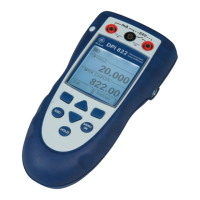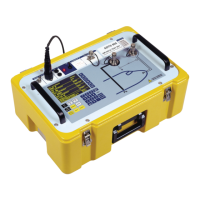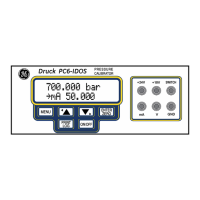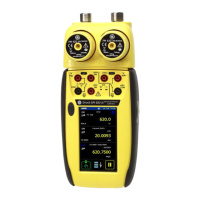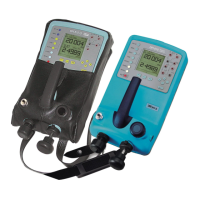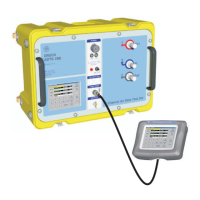1 Introduction Important information on wall thickness measurement
1-6 Edition 4 (05/2014) DMS Go+
Effect of the test object material
If the material is not homogeneous, the sound waves
may propagate at different velocities in different parts of
the test object. In this case, an average sound velocity
should therefore be taken into account for the instru
-
ment calibration.
However, the best results are obtained when the instru-
ment is calibrated using a reference block made of the
same material as the test object. This calibration block
should have plane-parallel surfaces and a thickness
corresponding to the maximum thickness of the test ob
-
ject. The operator
should additionally keep in mind that the sound velocity
is liable to vary substantially due to heat treatments.
This fact must be taken into account when assessing
the accuracy of the wall thickness measured by the in
-
strument.
If substantial sound velocity variations are expected,
then the instrument calibration should be adjusted to the
actual sound velocity values at shorter time intervals.
Failure to do so may lead to false thickness readings.
Effect of temperature variations
The sound velocity within the test object also varies
along with material's temperature. This can cause ap
-
preciable errors in measurements if the instrument has
been calibrated on a cold reference block, whereas the
thickness measurement is carried out on a warm test
object. Such measurement errors can be avoided either
by adjusting the temperature of the reference block
used for calibration or by taking the temperature effect
on the sound velocity into consideration on the basis of
a correction factor obtained from published tables.
Measurement of remaining wall thickness
The measurement of the remaining wall thickness on
plant components, e.g. pipes, tanks, or reaction vessels
of all types which are corroded or eroded from the in
-
side, requires a perfectly suitable gauge and special
care in handling the probe.
The operator should always be informed about the cor-
responding nominal wall thicknesses as well as about
the likely amount of wall thickness losses.
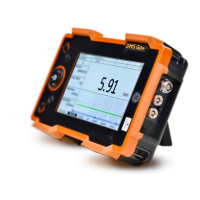
